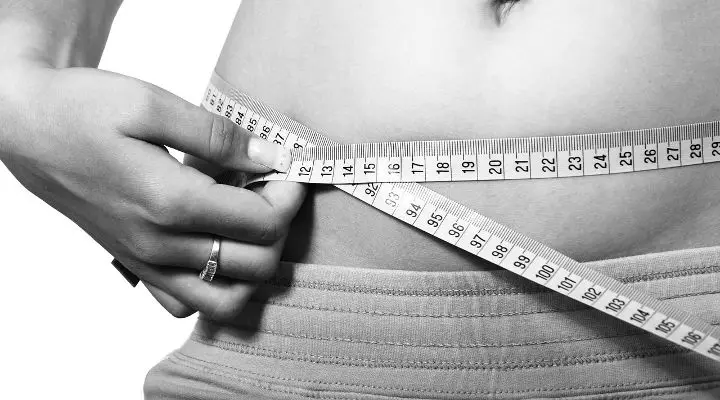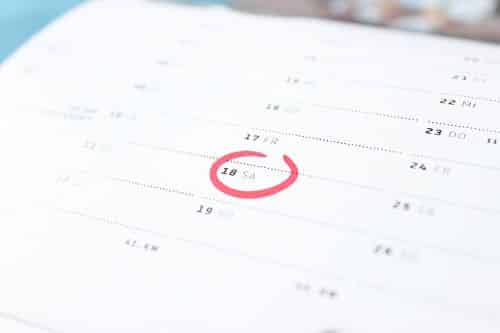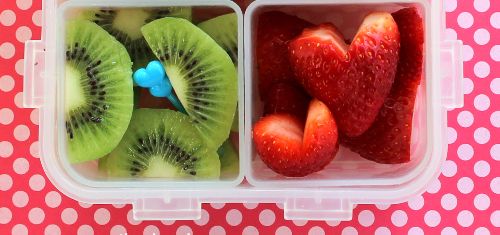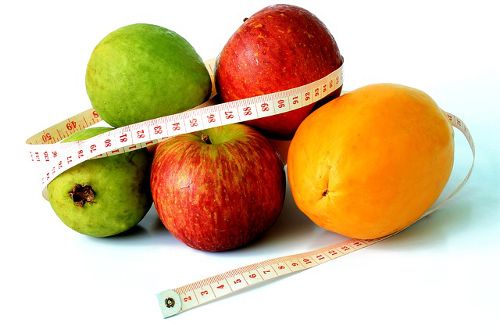The following article was contributed by Elizabeth Connolly, Co-founder of Trifecta Nutrition, a meal delivery service and part of the Paleo community.

Take less medication. Lower your risk of heart attack and stroke. Lower your cholesterol and blood pressure. Fight hypertension, insulin resistance and joint pain. The health benefits of weight loss are endless. Not to mention you feel great about yourself, have more confidence, and feel comfortable in your own skin. “The Paleolithic diet might be the best antidote to the unhealthy Western diet.”¹ The majority of people joining the Paleo movement aren’t doing it because it’s a cool new fad. You hopped on board because you want to be healthy or lose weight or both.
We cover the following....
Calories – they matter
First, I have to touch on a commonly misunderstood aspect of weight loss: calories in vs calories out. Though this may be a touchy subject for some, anyone who has lost a substantial amount of weight knows to ignore the quick fix answers. Some say, a calorie is a calorie is a calorie. You are going to train and feel much better if those calories come from whole nutritious foods. At the same time, you don’t get to eat more calories just because you are eating healthy food. You are simply going to feel fuller longer than if you ate junk for the same amount of calories.
We all know that person that lost a ton of weight “eating whatever they want”. The part they leave out, is that they couldn’t eat as much as they wanted. If you eat crap all day but are at a calorie deficit, you will lose weight. If you eat nutritious food all day and are at a calorie excess, you will gain weight. If you continue to eat the crap that most Americans do, you’re likely to develop digestive problems and micronutrient deficiencies that do more damage to your health than weight loss can benefit. It’s unfortunate that calories have been so snubbed with all of the diets, exercise regimens, supplements and miracle fixes. It’s no miracle. It’s science. It’s math. It’s actually pretty straightforward.
Another important aspect that is commonly misunderstood is weight loss vs body composition changes. We look at the scale and if we don’t see a decrease every day, we assume whatever we are doing is not working. Although you should lose weight over time, you won’t necessarily go down in weight day after day. It’s important to look at the way your weight is trending rather than day to day changes. Weight may not change when you lose fat and gain muscle. It’s extremely hard to do this when you are an elite athlete but for most people, when you lose fat, you are also gaining muscle. This can make measuring by the scale misleading. Watch your body composition – waist size, firmness, how clothes fit, etc. Paying attention to your calories in vs calories out along with eating Paleo approved foods will give you a jumpstart on your weight loss.
Whole foods vs processed foods
Two out of three adults in the U.S. are overweight or even obese, mostly due to the high-calorie and nutrient deficient diet.4 Obviously the Paleo diet emphasizes whole foods and with good reason. Satiety and nutrition are both absolutely vital if long term, sustainable weight loss is your goal. When it comes to hunger, it’s incredibly difficult to differentiate between actual hunger and fake hunger. Often times when you’re bored or watching TV it’s easy to think that you are hungery when in reality you don’t feel any hunger “pains” in your stomach, it’s probably not time to eat yet. I always recommend drinking a decent amount of water, tea, or coffee to make sure your empty stomach isn’t prompting you to eat when you are in fact just thirsty!
Going Paleo will obviously reduce the amount of sugar you’re eating drastically. You’ll notice cravings will go away, you won’t feel the “sugar crash”, and you won’t feel guilty all the time for eating foods you know are unhealthy. These changes don’t happen overnight though so you have to be patient – Paleo is a lifestyle not a temporary diet fix.
Carbs vs protein vs fat
It’s pretty universally agreed that higher protein diets are healthy and sustainable. But what about carbs and fats? The important thing here is to remember that what works for one person may not work for another. Eating too many or too few carbs for your exercise habits can stall weight loss so you want to tailor your carbohydrate intake to your activity levels. Eating carbs is most effective around your workout and since most people aren’t working out, it makes sense that low carb diets are so effective.
The elimination of grains on the Paleo diet quickly reduces your total carb intake. You’re replacing the unhealthy starchy grains with nutrient-dense vegetables and fruits. This promotes not only quicker weight loss but better overall health. “Low-carb diets also trigger greater lipolysis – the breakdown of body-fat – as your body shifts to burning fat as a primary fuel source.”²

80/20 Rule and 21 Day Rule
Dr. Cordain himself recommends using the 80/20 rule for modern day Paleo.³ I completely agree with this method but I think it can be advantageous to go full Paleo first. We all know it takes 21 days to form a habit, so spend the first 21 days going full Paleo. You’ll be able to cut out all the cravings you would otherwise have and explore a variety of new Paleo foods. At this point, you can start re-introducing a few healthy non-paleo foods like oatmeal or rice if you’re an athlete.
If you skip this initial habit forming exercise, you may find that it’s really hard to control your cravings for non-paleo foods. I’d even recommend a contingency plan in case you get off track. If you’re dying for something non-paleo like chocolate or cheese, try eating something Paleo approved first to fill yourself up and you won’t over-indulge so much on the cheat snack/meal. Another good back-up plan for cravings is to mix the non-paleo food in with a Paleo food ie. chocolate covered strawberries or toast with your eggs. I always recommend cheating as healthy or low calorie as possible so you don’t feel like you’ve gotten completely off track. Remember, 1 cheat meal won’t kill you but 5 times a week will definitely hinder your results!
Sometimes you need to even eliminate some Paleo foods that you crave. Bacon, nuts, dried fruit, natural sweeteners like honey. It’s ok to add these back in once you get your cravings under control, but they will sabotage your diet otherwise…just because they are “approved”, doesn’t mean you can eat them all day every day.
- Eat lots of vegetables with or before every meal.
- Limit nuts, nut butters and dried fruit
- Avoid Paleo “treats”
- Avoid shakes, smoothies, and juices.

Willpower vs systems
So you’re licking your fingers after finishing a bag of Chili Cheese Fritos. Is your willpower to blame? Are you just not strong enough mentally? Not necessarily. For the most part, humans are physiologically the same so this probably isn’t your issue. It’s vital to sticking to Paleo and your weight loss success to create a system around food and take willpower off the table.
You may have heard these tips before…if you’re serious about going Paleo and losing weight, start these today:
- Use smaller plates, bowls and even utensils
- Portion out your food ahead of time. Then put the rest of it back in the fridge or out of sight. Family style should be for special occasions only!
- Stop doing multiple things while eating. Turn off the TV. Stop reading the paper. Just focus on the food in front of you and slow down the feast. This kind of mindless eating causes us to overeat and not really enjoy the food we’re shoveling down.
- Stock your pantry and refrigerator with Paleo food.
Summary
If you’re eating a solid Paleo diet, you’re eating a wonderful variety of nutrient-dense foods, from wild caught salmon to Organic grapefruit and everything in between. For most people, Paleo is much more nutritious than anything they were eating previously. Apart from the above tips on maximizing Paleo for weight loss, don’t forget to get adequate sleep and exercise and you’re sure to succeed. The best advice I have ever received in nutrition and training: Consistency. Consistency. Consistency.
References
1) Klonoff DC. The beneficial effects of a Paleolithic diet on type 2 diabetes and other risk factors for cardiovascular disease. J Diabetes Sci Technol. 2009;3(6):1229-32.
2) Cahill G.F., Jr. Fuel metabolism in starvation. Annu. Rev. Nutr. 2006;26:1–22.
3) Dr. Loren Cordain. A Lifestyle Trending. Thepaleodiet. 25 Feb. 2012. Website. 26 Jan. 2016.
4) Cain Credicott. Weight Loss on a Paleo Diet. Paleo Magazine. 5 Mar 2015. Website. 26 Jan. 2016.



